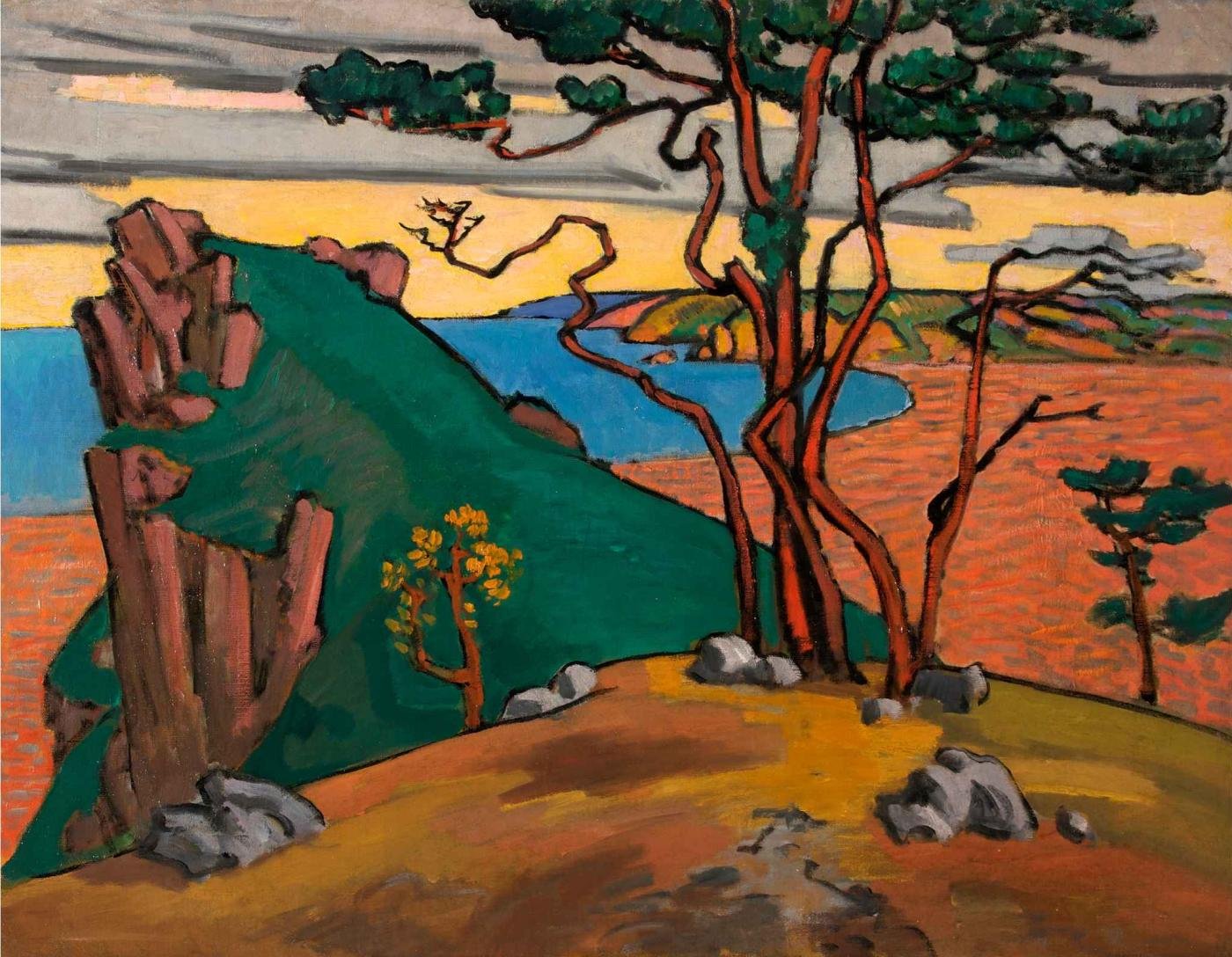In 1910, artist and art critic Roger Fry (1866-1934) shocked the London artworld with his exhibition ‘Manet and the Post-Impressionists’. Held at the Grafton Galleries, this was the first time a large-scale show of modern European painting was seen in London. Pablo Picasso’s distorted figures, Henri Matisse’s vivid blocks of colour and Vincent van Gogh’s turbulent canvases were shown in one space, alongside many other established artists of the European avant-garde.
This would be the first of Fry’s modern art exhibitions to shock Britain’s rather conservative art audience. He wanted to show people that the language of art should be appropriate to the modern times they lived in. Fry thought artists should “not seek to imitate form, but to create form; not to imitate life but to find an equivalent for life.”
Take Fry’s painting, Studland Bay, as an example. He depicts a view of the Dorset beach using a bold and limited colour palette, thick outlines and expressive strokes of paint. The canvas is dominated by a great sheet of green, but the eye is led around the image by a strong diagonal and a pattern of colour and form. Fry does not create a copy of the beach, but gives us a sense of the landscape’s contrasting shapes, colours and textures.
Today, Studland Bay is still a bold and dazzling painting, but in 1911, Roger Fry’s approach was downright revolutionary. Yet he wasn’t the only artist who wished to liberate art from tradition and bring it into the 20th Century. Without the willingness of formal art institutions to lead the way, smaller creative communities emerged.
Fry became a founding member of a liberal collective of artists and writers named the Bloomsbury Group. The close-knit group explored modern creative languages and modern subject matter. Studland Bay, a regular holiday destination, was a source of inspiration for some of the group’s painters. Fry rented a house there in 1911, which was when he painted this picture.
The beach provided a relatively modern subject matter for artists of this period. It began to exist as a social space in the mid-18th Century, in response to new discourse on the therapeutic advantages of sea-bathing. It would soon become a space where people could escape busy urban life, making use of the fast-developing railway.
However, Studland Bay was particularly appealing to the artist’s because it was vast and unspoiled. Unlike other resorts, which were easier to reach by train, it had not been developed with the rising popularity of the coast. With dazzling light and vast sheets of sand and sky, the beach was an ideal place to explore the formal reduction for which Fry advocated.
Studland Bay is on display in ‘A Very British Art Revolution: Rebellion and Reaction in the Early 20th Century’, until 5 July 2025.
This item is also available as a variety of merchandise, including a notebook, teatowel, mug, coaster and magnet.
Browse all of these retail items online and in our shop at Museum & Art Swindon.
Image Credit: Studland Bay, 1911, by Roger Fry (1866-1934)


